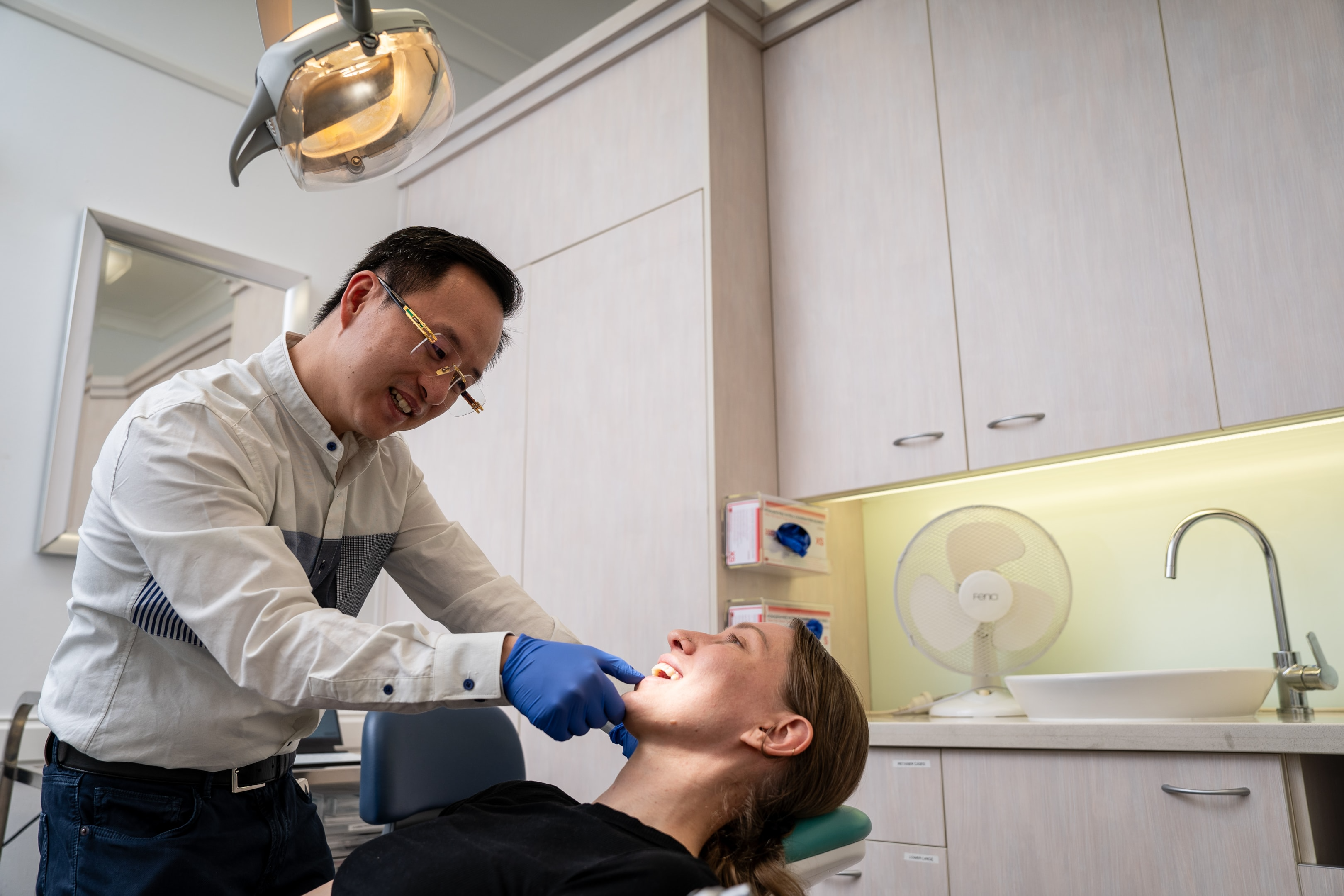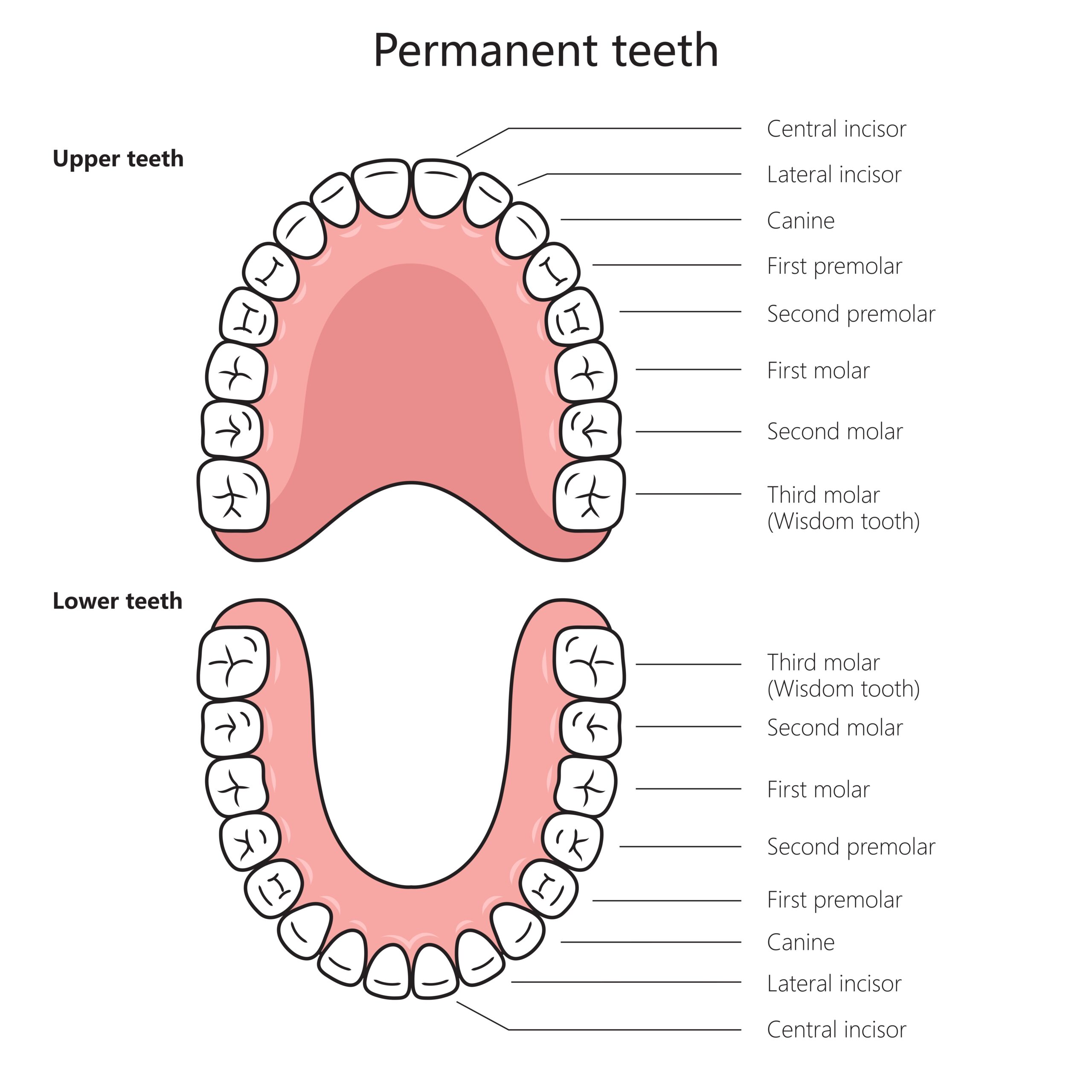
For many individuals, braces are the go-to solution for correcting misaligned teeth and improving overall dental health. However, in some cases, tooth extraction becomes a necessary step in the orthodontic journey. This can be daunting for patients and parents alike, raising questions about why extractions are needed, what the procedure entails, and how much it will cost.
This article will explore the reasons behind tooth extractions for braces, walk you through the tooth extraction process, and provide insights into the associated costs. Understanding these aspects can help ease any concerns and prepare you for a smoother teeth-straigthening journey.
Why Is Tooth Extraction Needed for Braces?
Tooth extraction is often a necessary step in the orthodontic process for many individuals. Here are some common reasons why a dentist or orthodontist might recommend extractions before starting braces:
1. Overcrowding
One of the most prevalent reasons for tooth extraction is overcrowding. When there isn’t enough space for all the teeth to properly fit in the jaw, it can lead to overlapping or misaligned teeth. In such cases, having a dental extraction can create the necessary space to allow the remaining teeth to shift into their ideal positions during orthodontic treatment.
2. Bite Misalignment
Bite misalignment, also known as malocclusion, can manifest as an overbite, underbite, or crossbite. In some instances, tooth extraction can help correct these issues by alleviating pressure on the jaw and allowing for better alignment of the remaining teeth. By creating space, orthodontists can achieve a more balanced bite and improve overall dental function.
3. Protruding Teeth
Protruding teeth can be both an aesthetic concern and a functional issue. When teeth are positioned too far forward in the mouth, they may be at a higher risk of injury and can affect speech and chewing. Extracting certain teeth can help bring protruding teeth back into a more desirable position, enhancing both appearance and functionality.
4. Impacted Teeth
Impacted teeth occur when there isn’t enough space for them to emerge properly from the gums. This often happens with wisdom teeth but can also apply to other teeth. If impacted teeth are present, an orthodontist may recommend their extraction to prevent complications such as infection or damage to adjacent teeth.
Which Teeth Are Removed for Braces?

When tooth extraction is deemed necessary as part of orthodontic treatment, the specific teeth that are removed can vary based on individual dental conditions.
- Premolars: Situated between the canines (cuspids) and molars. Most adults have eight premolars, two in each quadrant of the mouth (upper right, upper left, lower right, lower left).
- Molars: Located at the back of the mouth, behind the premolars. Adults typically have 12 molars, three in each quadrant (including the wisdom teeth).
- Wisdom Teeth: The third molars, located at the very back of the mouth. Many people do not have enough room for their wisdom teeth to erupt properly.
Which Teeth Are Extracted for Braces and Why?
| Type of Tooth | Estimated Relative Frequency of Extraction in Orthodontic Cases | Common Reasons for Extraction |
|---|---|---|
| Premolars (Bicuspids) | Highest (likely constituting 60–80% of extraction cases) | Overcrowding, bite correction (especially in Class II or Class III malocclusions), reducing dental protrusion |
| Molars | Moderate (likely around 10–20% of extraction cases) | Severe tooth decay or damage, impaction, or significant misalignment that impacts overall bite correction. It can also be used to compensate for missing teeth elsewhere. |
| Wisdom Teeth (Third Molars) | Varies widely (can be involved in 20–40% of extraction cases, either instead of or in addition to other teeth) | Impaction, prevention of future dental crowding or alignment issues (especially in late teens/early adulthood), pericoronitis (gum infection around the wisdom tooth), root resorption of adjacent molars |
Factors That Determine Which Teeth Are Removed
Orthodontists consider factors when evaluating the need to have teeth removed as part of a comprehensive orthodontic treatment plan:
1. Position and Alignment of Teeth
The current position and alignment of the teeth play a critical role in determining which teeth may need to be extracted. Misaligned or rotated teeth can contribute to overcrowding and malocclusion (bite issues).
Teeth that are significantly misaligned or protruded may be prioritised for extraction to create space for the remaining teeth to align properly.
2. Jaw Size and Space Constraints
The size of the jaw and the available space within it are crucial factors in orthodontic treatment planning. A smaller jaw may not have enough room to accommodate all teeth properly.
If there is insufficient space in the dental arch to fit all teeth without crowding, extractions are often necessary. In cases of severe crowding, extracting first premolars is common as they are centrally located and provide significant space for the remaining teeth to align.
3. Presence of Impacted Teeth
Impacted teeth do not fully erupt into the mouth due to improper positioning or lack of space. This is common in wisdom teeth but can also occur with other teeth.
Impacted teeth can cause pain, infection, or damage to adjacent teeth if left untreated. Therefore, a dentist or orthodontist will require tooth extraction as part of orthodontic treatment.
4. Overcrowding

Overcrowding is when there are too many teeth for the available space in the jaw, which leads to overlapping, misalignment, and difficulty maintaining oral hygiene. To alleviate overcrowding, orthodontists often recommend extracting one or more premolars. This creates additional space for the remaining teeth to be repositioned effectively.
The extraction of specific teeth depends on their location and contribution to crowding.
The Tooth Extraction Procedure for Braces
When tooth extraction is indicated as part of orthodontic treatment, the following steps are typically involved in removing teeth:
1. Consultation and Planning

A dentist conducts a thorough assessment, which includes:
- Reviewing the patient’s medical and dental history.
- Conducting a thorough examination of the tooth and surrounding tissues.
- Radiographic images (such as periapical or panoramic X-rays) are taken to evaluate the roots of the tooth and surrounding bone.
After consultation, the dentist will discuss the reason for extraction, alternative options (if applicable), and the procedure itself.
2. Anesthesia
Local anaesthesia is typically used for most routine extractions. It involves injecting a local anaesthetic agent in the area around the tooth to numb it. The technique may vary based on the tooth’s location.
- Nitrous Oxide: It may be used in conjunction with local anaesthesia to help reduce anxiety.
- Oral or Intravenous Sedation: Considered for patients with significant anxiety or for more complex extractions. This requires a qualified provider.
- General Anesthesia: Reserved for specific circumstances, such as complex extractions or patients with significant medical conditions that preclude safe treatment under local anaesthesia.
3. Extraction
Using dental elevators, the dentist or surgeon carefully loosens the tooth from its socket by severing the periodontal ligament.
Once adequately loosened, dental forceps are used to gently remove the tooth from its socket. If necessary, the tooth may be sectioned into smaller pieces to facilitate teeth removal.
For impacted teeth or those with complex root structures, a surgical flap may be created to access the tooth. This involves incisions in the gum tissue and possibly removing some bone.
4. Socket Management
After extraction, the socket is cleaned to remove any debris or bone fragments. Sutures may be placed to help close the extraction site and promote healing. This is more common in surgical extractions.
The average healing time of the extracted teeth varies depending on the extraction, the individual’s overall health, and adherence to post-extraction care instructions. Generally:
- Initial Healing (First Week): The first few days are typically the most uncomfortable. Pain and swelling are common during this time. A blood clot will then form in the socket of the extracted teeth, which is crucial for healing.
- Soft Tissue Healing (2-4 Weeks): The gums begin to close over the extraction site. Most of the soft tissue healing occurs during this period.
- Bone Healing (6-12 Months): Complete bone remodelling and filling of the socket can take several months to a year. However, most of the bone regeneration occurs within the first few months.
Pain Management and Recovery After Tooth Extraction
Following a tooth extraction performed as part of orthodontic treatment, managing pain and promoting optimal healing are paramount. While the extraction itself is performed under anaesthesia to minimise discomfort, some pain and swelling are expected during the initial recovery period.
To promote faster healing:
- Adhering strictly to the dentist’s instructions is essential. This includes:
- Biting firmly on gauze to control bleeding and promote clot formation.
- Taking prescribed pain medication as directed.
- Attending all scheduled follow-up appointments.
- Maintain good oral hygiene by gently rinsing your mouth (warm salt water) after meals to keep the site clean. Avoid directly brushing on the extraction site for the first few days.
- Pain Management:
- Take pain medication as prescribed.
- Alternate between ibuprofen (Advil, Motrin) and acetaminophen (Tylenol) every 3-4 hours, as directed by a healthcare provider.
- Apply ice packs to the face near the extraction site for 15-20 minutes at a time to reduce swelling and discomfort.
- Eat soft, nutritious foods to avoid irritating the extraction site.
- Stay hydrated, but avoid using straws, as they can dislodge the blood clot.
- Avoid physical activities and get plenty of rest.
- Avoid smoking and alcohol to avoid dry sockets.
- When resting or sleeping, elevate your head with extra pillows to minimise swelling.
- Refrain from touching the extraction site.
- Contact your dentist immediately if you experience:
- Severe pain that is not relieved by medication.
- Excessive bleeding.
- Fever, swelling, redness, or pus.
- A foul taste or odour in the mouth.
Eating After Tooth Extraction for Braces
| Food Category | Best Foods | Foods to Avoid |
|---|---|---|
| Liquids | Water, broth (lukewarm), clear juice (apple, grape – no pulp), electrolyte drinks (e.g., Pedialyte) | Carbonated drinks, alcohol, hot liquids (coffee, tea) |
| Soft Foods | Applesauce, mashed bananas, yoghurt (smooth), pudding, scrambled eggs (soft), well-cooked and mashed sweet potatoes, creamy soups (pureed, lukewarm), protein shakes (smooth) | Foods with small particles that can get trapped in braces (e.g., yoghurt with granola) |
| Pureed Foods | Pureed soups (e.g., tomato, butternut squash), pureed fruits and vegetables (e.g., avocado, mango), smooth protein smoothies | Soups or purees with chunks or seeds |
| Gradually Introduce (After a Few Days) | Soft pasta (well-cooked), rice (soft, well-cooked), flaky fish (no bones), soft chicken (shredded), well-cooked vegetables (steamed, soft) | Chewy, crunchy, or hard foods (e.g., steak, nuts, popcorn, chips, raw vegetables) |
Cost of Tooth Extraction for Braces
The cost of tooth extraction as part of orthodontic treatment with braces can vary significantly depending on several factors. It’s important to understand these factors to anticipate potential expenses and discuss them with your dentist or orthodontist.
- Consultation Fee: $50 – $150
- Radiographs (X-rays):
- Periapical (single tooth): $30 – $50 per tooth
- OPG (panoramic): $80 – $150
- CBCT (3D imaging): $250 – $500+
- Anaesthesia:
- Local Anaesthesia: Usually included in the extraction fee
- Nitrous Oxide (Happy Gas): $80 – $150 per session
- Sedation (IV/General): $500 – $1500+ per hour + facility fees
- Extraction Fee (Per Tooth):
- Simple Tooth Extraction: $150 – $300
- Surgical Tooth Extraction: $300 – $600+
- Impacted Wisdom Tooth: $400 – $800+ (Can be significantly higher)
- Socket Preservation (Optional): $300 – $600+ per site
- Sutures (If Required): $30 – $80 (often included)
- Post-Operative Care: Usually included (unless complications)
Alternatives to Tooth Extraction for Braces
While tooth extraction has historically been a common part of orthodontic treatment, advancements in techniques and technology now offer several alternatives that may help patients avoid extractions.
- Palatal Expansion
- Interproximal Reduction (IPR) / Slenderizing
- Headgear
- Temporary Anchorage Devices (TADs)
- Clear Aligners (e.g., Invisalign)
Long-Term Effects of Tooth Extraction for Braces
While tooth extraction can be a necessary part of orthodontic treatment to achieve proper alignment and bite correction, it’s important to understand the potential long-term effects.
- Skeletal/Dental Changes: Reduced arch length, potential for altered jaw relationships.
- Stability: Possible increased relapse risk, requiring long-term retainer wear.
- Periodontal Health: Potential for gum recession or bone loss around other teeth.
- Facial Aesthetics: Possible changes to the facial profile, lip support, and nasolabial angle.
- Function: Rarely affects chewing efficiency; TMJ issues are controversial.
- Maintenance: Strict retainer use is critical; possible increased risk of food impaction.
Understanding the long-term impact of extractions helps patients make informed decisions.
Conclusion
Tooth extraction is sometimes necessary before getting braces to correct crowded teeth, bite misalignment, protruding teeth, or impacted teeth. The teeth most commonly extracted are premolars, molars, and wisdom teeth, with premolars being the most frequent. The decision on which teeth to remove depends on factors like tooth position, jaw size, the presence of impacted teeth, and the severity of overcrowding.
Understanding the procedure, potential complications, and cost of tooth extraction helps patients make informed decisions about their orthodontic treatment.
